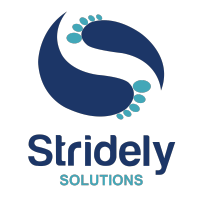Salesforce has grown into the backbone of many modern businesses, not just a CRM that stores customer records. Most organizations utilize it in conjunction with ERP platforms, marketing automation tools, analytics dashboards, and custom applications.
Salesforce integration with your other business systems, so data, processes, and intelligence move seamlessly across the ecosystem. Once integrated, data moves freely across platforms, creating consistency and eliminating silos that often slow down decision-making.
This connected setup allows teams to operate with clarity. Information stays accurate, workflows become more predictable, and overall experience improves for both employees and customers. Salesforce integration is, in essence, about enabling a business to function as one cohesive system instead of a collection of disconnected tools.
Business Benefits of Salesforce Integration
Integrating Salesforce with other business systems brings information, workflows, and people together under one connected structure.
- Unified Data View
Integration creates a single, dependable source of truth. Customer data stays aligned across departments, ensuring teams make decisions based on the same information.
- Automated Workflows
Manual updates and repetitive entries are replaced with automated data exchange. It reduces human errors and gives teams more time for meaningful work.
- Enhanced Productivity
Teams can continue using their preferred tools while Salesforce remains updated in real time. This keeps work smooth and uninterrupted.
- Improved Customer Experience
Every customer touchpoint stays consistent because all systems share information. It builds continuity and strengthens relationships.
- Better Decision Making
Accurate and unified data make analysis more reliable. Leaders can track performance, plan strategically, and act with confidence.
- Increased CRM Adoption
A connected environment makes Salesforce naturally more useful. Users see more value when the system supports their daily tasks and integrates with familiar applications.
- Accelerated Sales Cycles
Sales teams get a complete picture of every customer interaction in one place. It shortens turnaround times and allows them to focus more on closing deals.
Salesforce Integration Architectures
Building a Salesforce integration strategy begins with choosing the right architecture. The structure you select defines how systems connect, how data moves, and how easily the entire setup can scale. The right choice depends on your business requirements, existing infrastructure, and available technical expertise.
Point-to-Point Integration
Point-to-point integration links Salesforce directly with individual applications. Each connection is created and managed separately.
Pros
- Easy to set up for a limited number of applications
- Faster to deploy when integrations are straightforward
- Lower upfront investment compared to complex models
Cons
- Becomes hard to manage as integrations grow in number
- Any change in one system may require multiple updates
- Limited ability to scale for large enterprise setups
Hub-and-Spoke Integration
In a hub-and-spoke setup, Salesforce functions as the central hub that connects to various systems through individual spokes. This structure centralises control and simplifies monitoring.
Pros
- More structured and manageable than point-to-point
- Easier maintenance as every system connects through a single hub
- Provides better visibility into how data moves between systems
Cons
- The hub can turn into a performance bottleneck if not designed properly
- Requires planning and alignment between teams
- Can still face challenges when handling complex transformations
Enterprise Service Bus (ESB)
An ESB architecture uses a middleware layer to manage communication between Salesforce and other applications. The bus handles message routing, protocol conversion, and data transformation without needing direct links between systems.
Pros
- Highly scalable and suited for enterprise environments
- Handles complex data transformations and rules effectively
- Offers strong monitoring and error management
- Supports both synchronous and asynchronous communication
Cons
- Higher implementation cost and technical complexity
- Needs specialised skills for development and maintenance
- Can introduce slight processing delays if not optimised
Selecting the right architecture is a strategic decision. Smaller organizations may prefer the simplicity of point-to-point connections, while enterprises with intricate ecosystems usually benefit from an ESB that can manage large-scale, evolving integrations efficiently.
How to Integrate with Salesforce
Salesforce provides several ways to connect with other applications and systems. Each approach serves a different purpose, depending on your technical setup, data flow needs, and the level of customization you want to achieve.
App-based Salesforce Integration
App-based integration is one of the simplest ways to connect Salesforce with other platforms. It uses ready-made connectors and tools that handle the technical complexity for you. Platforms like Zapier, MuleSoft, and Workato make it possible to set up integrations in minutes without deep coding expertise.
For instance, Zapier can link Salesforce with thousands of popular apps, enabling smooth data exchange between them.
With app-based integration, you can:
- Add new Facebook Lead Ads as Salesforce leads
- Create Slack notifications whenever new leads are added
- Sync Salesforce events with Google Calendar
- Auto-create HubSpot contacts from Salesforce data
This method works well for teams that need quick results without involving heavy development.
Code-based Salesforce Integration (Apex)
For deeper control and advanced workflows, Salesforce offers Apex, its proprietary programming language. Apex works similarly to Java or C#, allowing developers to interact directly with Salesforce’s database and logic layer.
Using Apex, you can:
- Build custom REST or SOAP web services
- Define complex business rules for data synchronization
- Manage transaction control and error handling
- Trigger automation before or after specific record changes
Code-based integration is ideal when ready-made tools cannot handle the level of precision or process control your business requires.
User Interface Integration
Salesforce also supports UI-based integration, where external applications are embedded directly into the Salesforce interface. Through methods like mashups, users can access data or functionality from other systems without leaving Salesforce.
Examples include:
- Displaying an external website in a Salesforce tab or component
- Embedding dashboards from analytics platforms
- Integrating mapping tools for geographic insights
- Exchanging real-time information with other applications
UI integration enhances user experience by keeping all essential tools accessible from one interface.
Business Logic Integration
This approach extends business processes and rules between Salesforce and external systems, ensuring consistency across all touchpoints.
There are two directions of logic flow:
- Inbound Integration – External systems trigger processes inside Salesforce, often using Apex Web Services.
- Outbound Integration – Salesforce initiates actions in other systems through Apex Callouts.
This setup ensures that critical workflows and validations are applied wherever data is created or updated.
Data Integration and APIs
At the core of Salesforce connectivity lie its APIs. These interfaces manage how data moves between Salesforce and external systems, supporting both real-time and large-scale synchronization.
Key Salesforce APIs include:
- REST API – Lightweight and best suited for mobile or web integrations
- SOAP API – Commonly used for connecting enterprise systems like ERP or finance applications
- Bulk API – Designed for processing high volumes of data efficiently
- Streaming API – Delivers real-time event updates
- Metadata API – Manages configurations and customizations within Salesforce
- Apex REST/SOAP API – Enables developers to build tailor-made APIs for unique business cases
For instance, the SOAP API can connect Salesforce with ERP and financial systems, ensuring that customer information, transactions, and sales updates remain consistent across departments and portals.
Salesforce Integration Patterns
Integration patterns are established design approaches that help address recurring challenges in connecting Salesforce with other systems. By understanding these patterns, teams can choose the right strategy for stability, scalability, and performance.
Remote Call-In
The Remote Call-In pattern allows external applications to perform actions inside Salesforce through its exposed APIs. It enables outside systems to create, read, or update Salesforce records whenever an event occurs.
Typical use cases
- A website form automatically creates a lead in Salesforce
- A mobile app retrieves customer data directly from Salesforce
- A partner portal updates opportunity details within Salesforce
Request and Reply
In this pattern, Salesforce sends a request to an external system and pauses until it receives a response. It is a synchronous interaction used when immediate confirmation or validation is necessary before continuing a process.
Common examples
- Checking payment or credit card validity before placing an order
- Fetching live inventory details from a supply chain system
- Retrieving customer credit scores during qualification
Fire and Forget
The Fire and Forget approach is asynchronous. Salesforce sends information to another system but does not wait for a reply. It works well for notifications and background updates where instant feedback is not essential.
Examples include
- Sending details of new leads to a marketing automation platform
- Sharing customer data with analytics systems for reporting
- Triggering downstream workflows in external applications
Batch Data Synchronization
Batch synchronization handles large volumes of data in planned intervals rather than in real time. It reduces system strain and ensures steady updates without affecting daily operations.
Typical applications
- Nightly product catalogue updates
- Weekly refresh of customer information from ERP systems
- Monthly financial reconciliation between platforms
UI Update Based on Data Changes
This pattern focuses on keeping user interfaces current as data changes in Salesforce or in connected systems. It helps deliver real-time visibility to users without manual refresh or lag.
Practical uses
- Showing up-to-date stock levels on opportunity records
- Updating dashboards instantly as performance metrics shift
- Displaying live service ticket status on account pages
Data Virtualization
Data virtualization allows Salesforce users to view and interact with data stored in external systems without duplicating it inside the CRM. The data remains in its original location but appears accessible through Salesforce’s interface.
Use cases
- Showing current product details stored in a product information management system
- Viewing historical transactions from data warehouses
- Monitoring real-time IoT data within Salesforce screens
Salesforce Integration Tools
Choosing the right integration tool can make a major difference in how smoothly Salesforce connects with your wider technology landscape.
| Integration Tool | Key Features | Best For |
| MuleSoft | API-led connectivity, pre-built connectors, visual design interface | Enterprise-level integrations with complex requirements |
| Zapier | No-code interface, thousands of app connections, automation templates | Simple integrations without developer resources |
| Jitterbit | Cloud and on-premise integration, pre-built templates, API management | Mid-sized organizations with diverse integration needs |
| Boomi | Low-code development, master data management, API management | Organizations requiring robust data governance |
| Workato | Enterprise automation, AI-powered suggestions, and collaboration features | Business users who need powerful automation capabilities |
Transforming Enterprise Operations with Salesforce Integration
A global semiconductor manufacturer faced disconnected regional CRMs, fragmented workflows, and limited visibility into customer journeys. With multiple ERP systems in play, approvals and order management became manual and time-consuming. Stridely Solutions partnered with the client to unify all regional CRMs into a single Salesforce instance and integrated it seamlessly with SAP and non-SAP platforms using MuleSoft and SAP BTP.
This transformation gave teams a single source of truth and eliminated duplication across regions. Automated workflows replaced manual approvals, reducing turnaround time and operational overhead. Finance checks and order updates became real-time, improving accuracy and compliance. The leadership gained complete visibility into pipelines and performance, leading to faster and more confident decision-making.
The result was a connected, scalable CRM ecosystem that simplified daily operations and empowered teams to focus on customers rather than coordination.
Maximize Salesforce efficiency with Stridely
With the right integration strategy and tools, Salesforce can transform from a standalone CRM into the heartbeat of your organization. Partnering with experts like Stridely ensures this transformation happens smoothly, with measurable value and future-ready scalability.
At Stridely Solutions, we design and deliver Salesforce integrations that focus on stability, visibility, and scalability. Using platforms like MuleSoft and SAP BTP, we help enterprises unify Salesforce with SAP and non-SAP systems, automate workflows, and eliminate data discrepancies. Contact us today.
Frequently Asked Questions
- What exactly does Salesforce integration mean?
Salesforce integration connects your CRM with other tools and platforms so that data moves smoothly between systems. It helps teams work with the same information instead of juggling multiple applications. With everything linked together, customer insights become sharper, workflows run faster, and business decisions get easier and more reliable. - What kinds of Salesforce integration exist?
There are several approaches depending on how complex the systems are. Some use pre-built connectors for quick setup, others depend on code-based development for custom needs. Data-level integration keeps information in sync, while user interface and logic-based integration help extend workflows across platforms. Each method fits a different business goal, from simple automation to complete digital alignment. - What are the typical Salesforce integration architectures?
Architectures usually follow three main models. Point-to-point connections link Salesforce directly to another system. Hub-and-spoke places Salesforce at the centre, connecting multiple apps around it. Enterprise Service Bus uses middleware to manage communication between all systems. The choice depends on how many integrations you plan to run and how scalable your setup needs to be. - Which APIs are commonly used in Salesforce integration?
Salesforce offers a wide range of APIs for different purposes. REST and SOAP APIs handle most data exchanges, while the Bulk API manages large data loads efficiently. Streaming API is ideal for real-time updates, and the Metadata API supports customization management. Apex APIs come into play when there’s a need to create tailored connections. - What practices ensure smooth Salesforce integration?
A strong integration starts with clear goals and well-defined data ownership. Teams should plan security, manage performance, and maintain proper documentation. Testing plays a big role before going live, and regular monitoring helps catch issues early. Keeping these basics right makes the entire setup stable and easier to scale over time. - How does Stridely simplify Salesforce integration for enterprises?
Stridely builds integration frameworks that focus on stability, visibility, and real-time access. Using tools like MuleSoft and SAP BTP, Stridely connects Salesforce with both SAP and non-SAP systems in a way that keeps operations uninterrupted. The result is a connected ecosystem where sales, service, and operations work in sync without the usual data chaos.


